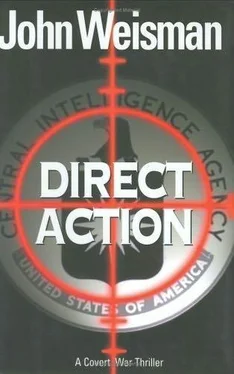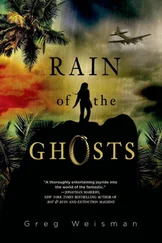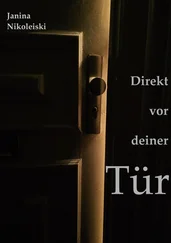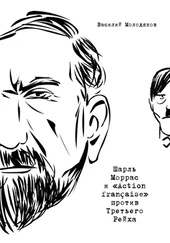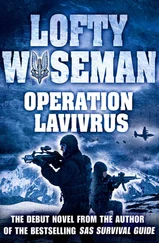He slid the small black-and-white rectangle with Imad Mugniyah’s likeness across the table. “Do you recognize this man?”
Dianne squinted down at the small picture. “No.”
“Are you sure?”
“Absolutely. I’ve never seen him in my life.”
Tom picked up the photo of Imad Mugniyah, stuck it back in his pocket, and replaced it with the second picture, which he’d cropped from Shahram Shahristani’s surveillance photo of Tariq Ben Said. “What about him?”
She pulled the image across the table. “No.”
He retrieved Ben Said and pulled a third photo from his pocket-it was a crop of Yahia Hamzi’s passport picture. Reuven had made sure to remove the stamp in the bottom corner so its origin would be obscured.
She glanced at the photo then looked over at Tom. “That’s Talal Massoud-Malik’s editor at Al Arabia . His hair is longer, his face is a little bit rounder, and he’s wearing different glasses. But it’s Talal.”
Tom reclaimed the picture and returned it to his coveralls, fighting to keep his composure so that he’d give off no hint of the excitement he felt. The pulse racing in his temples, he stared at her coolly and spoke in laconic Marseillaise. “Thank you, Dianne. We’re done.”
He rose, walked to the door, and rapped twice sharply on the cold metal. The pieces of the puzzle were coming together and it was time that he and Reuven called Tony Wyman on the secure phone and laid things out.
They -whoever they were-had been worried enough about Jim McGee to murder him. Blew up the Suburban and killed Jim and two others because they believed McGee knew something he shouldn’t have known: that Imad Mugniyah was in Gaza.
Except McGee hadn’t known it was Mugniyah. All he knew was that there was a mysterious individual who moved frequently and who was protected by an imported crew of bodyguards, some of whom were Hezbollah, others possibly Iranians-the Seppah.
Those revelations hadn’t killed McGee. What had set the ambush in motion was Shafiq Tubaisi’s offhand comment that Sheikh Ahmed Yassin, the godfather of Hamas, had kissed the man’s hands. Yassin kissed both his hands and asked for his blessing.
That was what Shafiq told McGee. Tom had read it in McGee’s penultimate message. He’d understood the significance of the act, even if McGee hadn’t. Which was why he’d tasked McGee to order Shafiq to get a picture.
Because of that tasking, McGee was dead-and so was Shafiq. They were dead because somewhere, in somebody’s head, an operational clock was ticking. And the bad guys out there, the ones President Bush had so accurately termed the evildoers-accurate because Tom knew that was precisely how the Koran referred to criminals, murderers, and assassins-were about to stage a major hit.
The evildoers were gearing up for something big. Something spectacular. The evildoers’ version of shock and awe.
There was, Tom understood all too well, a particular rhythm-a cadence if you will-to megaterror. Megaterror is not impetuous, seat-of-the-pants stuff. It is well planned, highly organized, and above all disciplined. The bad guys plot, probe, and test. They take months performing target assessments in order to weed out the harder-to-strike targets in favor of the softer ones. This very week in New York, Boston, Washington, D.C.; Orlando, and Miami, there are al-Qa’ida sleepers posing as tourists. They visit Universal Studios, Capitol Hill, Faneuil Hall, or South Beach and take thousands of digital photographs, which are passed on to al-Qa’ida analysts who pore over them in order to identify security flaws.
Other sleepers-just like Ramzi Yousef in 1992-find jobs as taxi drivers or commercial messengers. What better way to learn the ebbs and flows of a city and uncover its vulnerabilities? Still others find work on the hundreds of minimum-wage crews who spend their nights scrubbing office-building bathrooms and waxing corporate headquarters’ lobbies and corridors. When’s the last time anyone paid much attention to the anonymous peons who clean Citigroup’s offices at night? Or Merrill Lynch’s? Or GM’s? Yet what better way to discover the best places to preposition blocks of C4 or Semtex; to disable the elevators; to cause the largest number of casualties.
Still other sleepers gauge first-responder reaction time by phoning in bogus threats and videoing the results. Tom knew that for the past ninety days, there had been a precipitous rise in the number of false alarms in New York, Paris, London, and Madrid. That told him that at least one of those cities had been targeted.
They were probing the airports, too. A three-week-old memo from 4627’s Washington office reported that al-Qa’ida was currently identifying chinks and weak spots in domestic U.S. airline security by sending easily identifiable Muslims on cross-country flights with orders to act suspiciously and thus identify the federal air marshals on the flight. Other, less noticeable sleepers were photographing the incidents with cell-phone cams. The air marshals’ faces went into an al-Qa’ida database. Interpol reports from Brussels indicated similar occurrences on domestic flights all over Europe. But no one had any inkling what al-Qa’ida was planning-with or without Tehran’s help, with or without Fatah’s diplomatic pouches.
That was why the megaterror process often took years to identify and target, why it was so hard to go proactive. The first al-Qa’ida reconnaissance of U.S. embassies in Africa that resulted in the 1998 attacks in Kenya and Tanzania took place in 1993. The planning for the October 2000 suicide bombing of the USS Cole began four years earlier. Plotting for 9/11 also began in 1996, more than half a decade before the attacks on the World Trade Center and the Pentagon, when Khalid Sheikh Mohammad first suggested training terrorists to fly hijacked aircraft into buildings in the U.S.
But in each case, the pace accelerated inexorably in the period running up to the attack itself. There was always a palpable quickening of tempo. Intensified message traffic, multiple probes and/or dry runs, and increased target assessments always- always -indicated that al-Qa’ida had started its countdown.
The Big Question, as the pundits always said on those long-winded Washington talk shows, was: Countdown to what? To that, Tom hadn’t an answer.
But then, neither did CIA. CIA was dysfunctional these days. That’s why the Company, as it was sometimes called, was currently reduced to hiring private firms like 4627 to gather human-source intelligence on its behalf. And 4627 was hiring people like Jim McGee because CIA was incapable of completing the mission it had been created to do. CIA was in a shambles. The Agency was clueless.
Of course Tom hadn’t a clue either. But he knew a lot more than CIA did.
• Tom knew that Imad Mugniyah and Tariq Ben Said had been on-site when Jim McGee was killed in Gaza. CIA, in the person of Mrs. Portia M. ST. JOHN, had rejected that possibility out of hand.
• Tom knew that Ben Said the master bombmaker was about to perfect a new, sophisticated, and undetectable remote detonator for his IEDs. CIA had no inkling Tariq Ben Said even existed.
• And finally, Tom understood that if he could OODA-loop 16Ben Said, he could disorient the assassin, disrupt his plans, and neutralize him before he killed anyone else.
The heavy steel door in front of his nose opened outward and Tom stepped ecstatically onto the rubber pad of the corridor, where Salah was waiting for him, a reproachful look on his face. Obviously, Salah was kicking himself for not having Tom shake his handkerchief out before he’d been allowed to bring it into the interrogation room.
Tom was sweating heavily. He looked down at his hands. They were shaking. And as quickly as it had come on, his excitement was replaced by a sudden gnawing pain in the pit of his gut. That spasm reinforced Tom’s gloomy acknowledgment that even though he understood the clock was ticking, he had absolutely no idea how much time was left before the attack would occur.
Читать дальше
